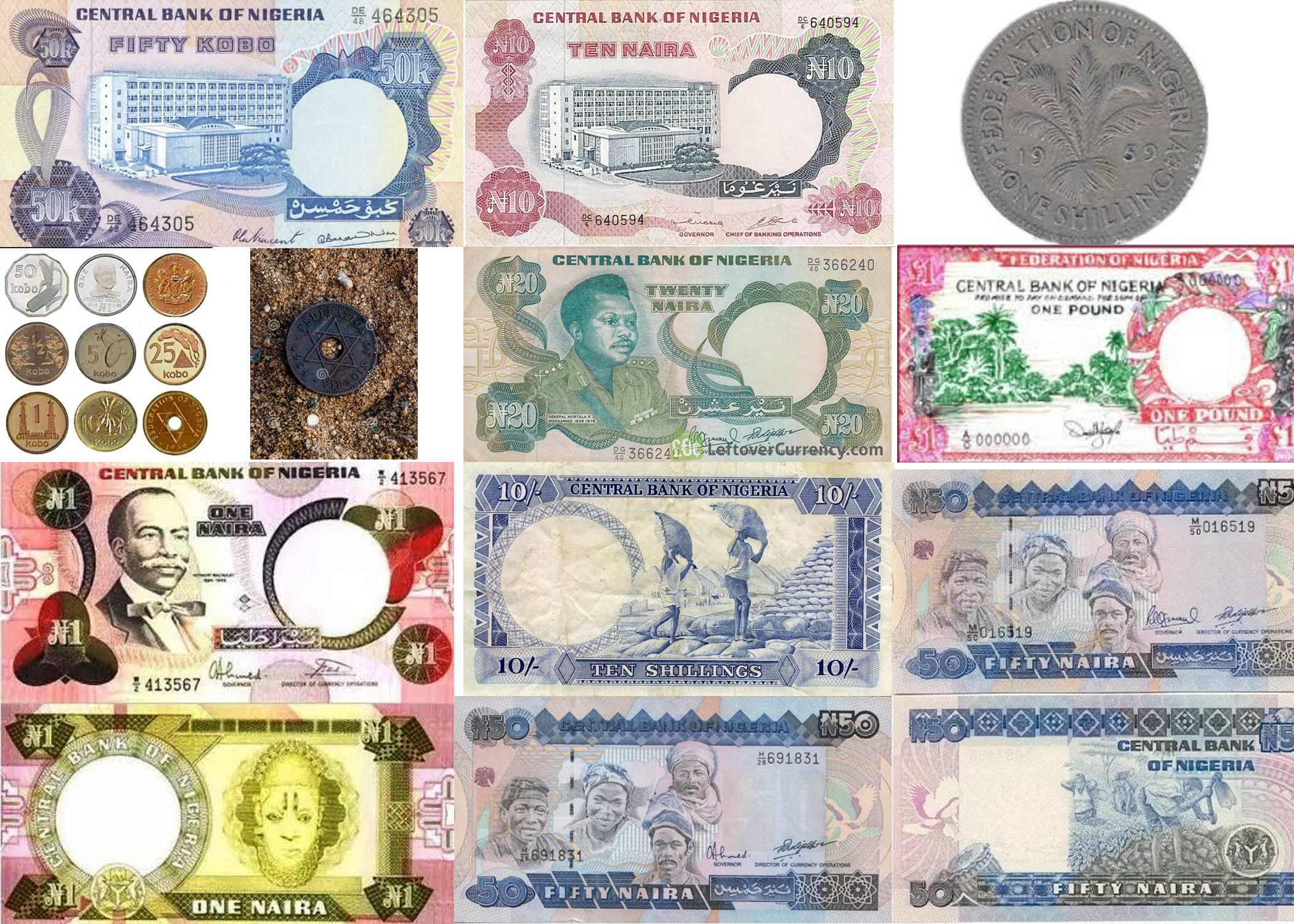By Abimbola Mohammed
If you spend most of the currencies shown above, you must truly be old school because a couple actually dates back to colonial Nigeria.
During the pre-colonial era, different cultures used a variety of items as means of exchange. These included cowries, manilas, beads, bottles, and salt amongst others.
According to the Central Bank of Nigeria, the first major currency issue in Nigeria was undertaken following the colonial ordinance of 1880 which introduced the Shillings and Pence as the legal tender currency in British West Africa. The units of coins managed by the Bank of England were one shilling, one penny, 1/2 penny, and 1/10 penny and were distributed by a private bank, the Bank for British West Africa till 1912.
The pound was the currency of Nigeria between 1907 and 1973. Until 1958, Nigeria used the British West African pound, after which it issued its own currency. The pound was subdivided into 20 shillings, each of 12 pence.
From 1912 to 1959, the West African Currency Board (WACB) issued the first set of banknotes and coins in Nigeria, Ghana, Sierra Leone, and the Gambia. The highest banknote denomination was one pound, while the one shilling coin was the highest coin denomination.
On 1st July 1959 CBN issued Nigerian currency banknotes, while the WACB-issued banknotes and coins were withdrawn. It was not until 1st July 1962 that the currency was changed to reflect the country’s republican status. The banknotes which bore the inscription, ’FEDERATION OF NIGERIA‘, now had, ‘FEDERAL REPUBLIC OF NIGERIA’, inscribed at the top.
The notes were again changed in 1968 following the misuse of currency banknotes during the civil war. The name of Nigeria’s currency was changed in 1973 £1 ceased to exist and the one naira which was equivalent to ten shillings became the major unit, while the minor unit was called the kobo.
On 2nd July 1979, new currency banknotes of three denominations, namely ₦1, ₦5, and ₦10 were introduced. These notes were of the same size i.e. 151 X 78 mm as the ₦20 note issued on 11th February 1977.
To facilitate identification, distinctive colours were used for the various denominations. The notes bore the portraits of three eminent Nigerians, who were declared national heroes on 1st October 1978. The engravings at the back of the notes reflected various cultural aspects of the country.
On 11th February 1977, a new banknote with the value of twenty naira (₦20) was issued. It was the highest denomination introduced at the time as a result of the growth of the economy; the preference for cash transactions and the need for convenience. Head of State, General Murtala Ramat Muhammed (1938-1976) who was assassinated in a coup plot in February 1976 was the face that adorned the new note. The note was issued on the 1st anniversary of his assassination as a fitting tribute to a most illustrious son of Nigeria.
In October 1991, Fifty Naira (50) note was introduced as the highest denomination and the One Naira (1) and Fifty kobo (50k) were withdrawn and coined. A completely new coin range was issued as part of a major reform of the nation’s currency structure. The coins were in the following denominations. One Naira (1), Fifty kobo (50k) Twenty-five kobo (25k), Ten kobo (10k), and One kobo (1k). Half kobo and five kobo were withdrawn in 1991 year.









Comment
No comments found.